Virginia’s rich history dates back centuries. Starting as the Colony of Virginia, it was the New World’s first official colony, earning it the long-lasting nickname “the Old Dominion.” Today, the state welcomes over 40 million tourists a year to enjoy the local theme parks, the Shenandoah Valley, miles of coastline, and unique wildlife. There’s no better way to experience Virginia than to immerse yourself in it, so where should you start? Try beginning with the state park that gets the most visitors of any other park in the Commonwealth – First Landing State Park.
Fun Facts About First Landing State Park
- First Landing State Park was formerly the Seashore State Park until 1997, but it is on the National Register of Historic Places as “Seashore State Park Historic District.”
- Over 1 million people visit the state park annually, making it the most popular state park in Virginia.
- This location marks where English colonists first arrived in the present-day United States.
- There are over 19 miles of paths, separated into 9 trails.
Virginia Beach: The Home Of First Landing State Park
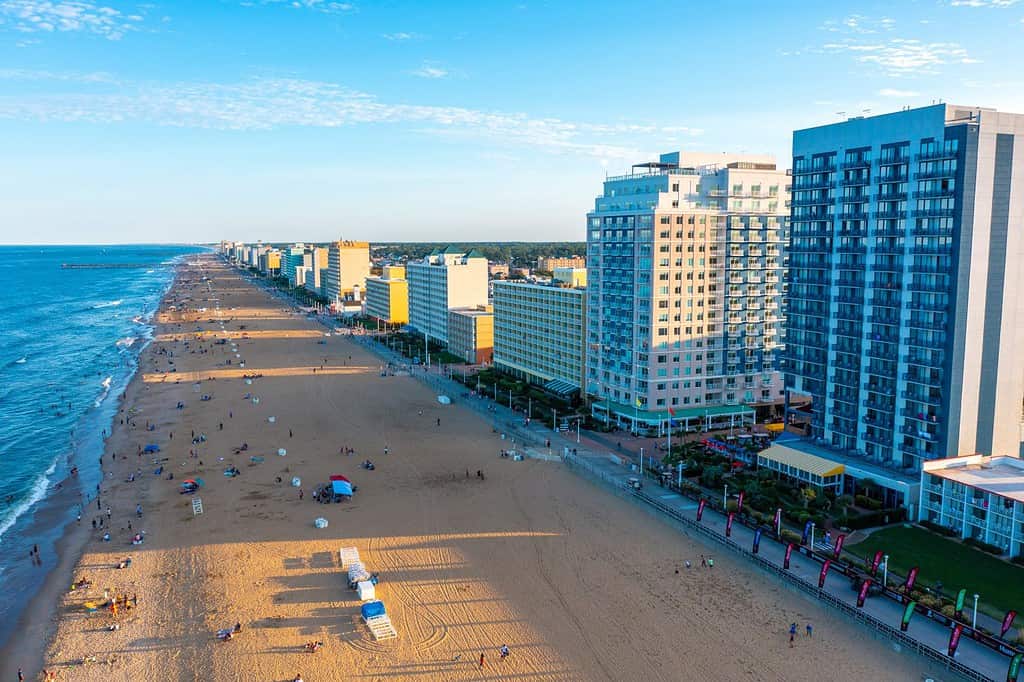
First Landing State Park is in Virginia Beach, offering a moderate climate without significant weather extremes.
©Kyle J Little/Shutterstock.com
The only way to visit First Landing State Park is to go to Cape Henry in Virginia Beach, nestled near the Chesapeake Bay. Virginia Beach has a population of 455,618 people with a median income of $87,544 annually. Approximately 94% of locals graduated from high school, and almost half of those graduates now hold at least a bachelor’s degree. The average cost of a home in Virginia Beach is $374,950.
First Landing State Park: A Historical Namesake

The site of this state park is the location that the first English settlers secured as their territory before moving on to Jamestown.
©Virginia State Parks staff / CC BY 2.0 – Original / License
The original name of First Landing State Park was Seashore State Park. The Civilian Conservation Corps started work on the park in 1933, spreading across 1,060 acres when it was completed on June 15, 1936. With several expansions since the initial construction, the total size of the park is now 2,888 acres. The park shut down in 1955 as a protest against integration, but it was reopened in 1965 with its integration as part of the terms of the 1964 Civil Rights Act. In the same year, a portion of the park was named a National Natural Landmark, renaming it the Seashore Natural Area.
In 1997, officials decided to change the name to First Landing State Park. The name came from a reference to the location that it was the spot where settlers first landed when they arrived in the New World. They felt that the new name was a better reflection of the area, giving them a chance to honor the first place that set the future United States in motion on April 26, 1607.
To educate the public about the history of the park and the Commonwealth of Virginia, there are many nature and history programs available at the visitor center.
Recreational Activities At First Landing State Park
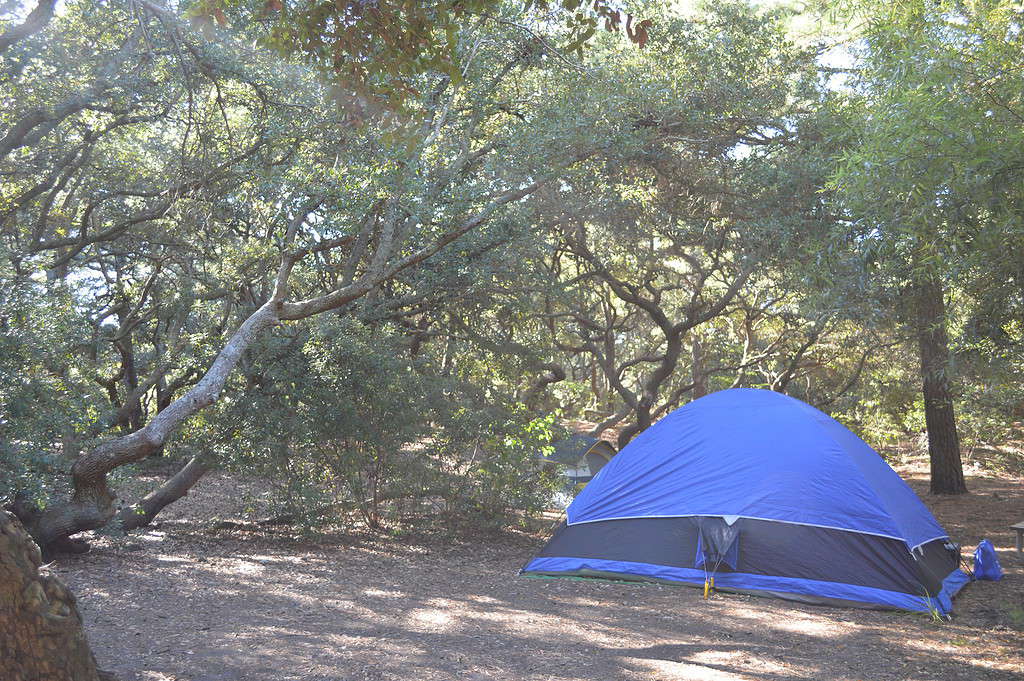
Fishing, camping, and boating are some of the most common recreational activities in coastal Virginia, especially at this state park.
Visiting the state part gives you access to many recreational activities, including access to fishing areas. Either bring your gear or borrow some from the office to see what the catch of the day is. Both crabbing and fishing are common at this park, but any fishing requires a fishing license. Boats are available to launch, though the park accommodates private boats who want to drive within the bay. Staying on land also offers many recreational opportunities, like hiking, biking, and picnicking.
If you want to continue with your bayside activities and trekking the woods, go to the visitor center to reserve one of the cabins or camping sites. Over 1 million people come to see the sights every year, and many become overnight guests to have enough time to participate in all the activities. The campsites feature water and electric hookups with access to showers and restrooms. Since the rates change with each season, check with the local office for the rates on your preferred travel dates before booking any accommodations.
Some people come to First Landing State Park as a way to relax on the beach as well. The public beach is free to access, and the Bay Store offers plenty of snacks, groceries, and other supplies you may need for the day. Even if you visit the park with no gear for fishing, crabbing, biking, or any outdoor activities, this shop can help. Picnic areas also offer access to grills, tables, restroom facilities, and water at no additional cost. There’s even a laundry facility for anyone who needs to wash their clothing, though you must pay to use these services.
Wildlife At First Landing State Park
With tidal marshes, swampland, beaches, and even endangered forest areas, the First Landing State Park is the ideal habitat for many animals, especially songbirds and other nesting species of birds.
Orange-Crowned Warblers
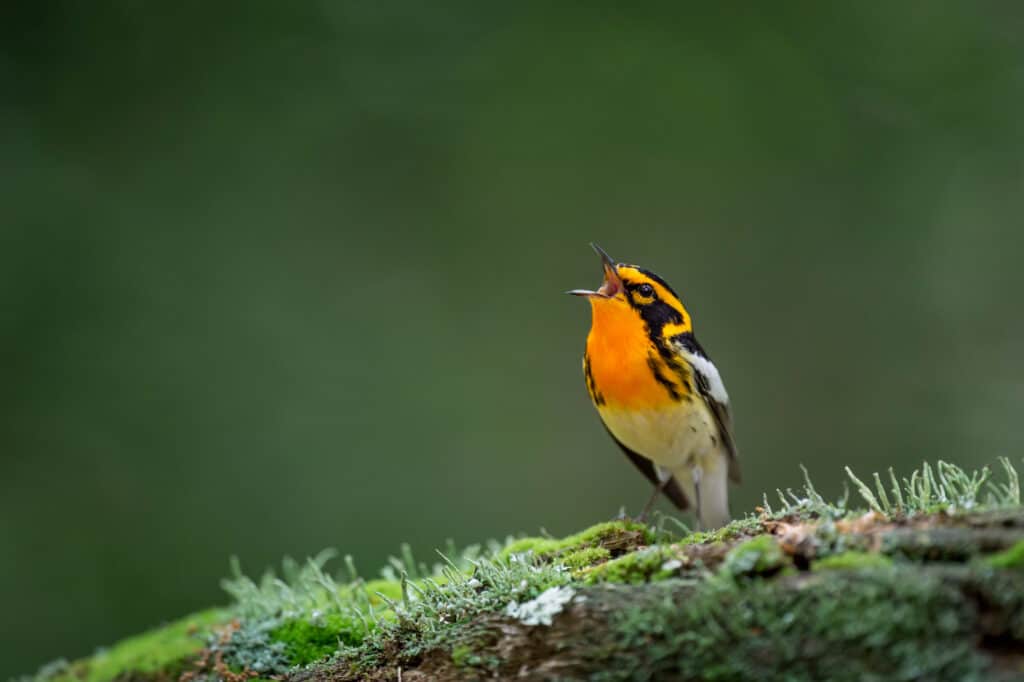
Warblers are one of the many songbirds you can hear in Virginia’s most popular state park.
©Ray Hennessy/Shutterstock.com
The thin bill of the orange-crowned warbler helps it stand out from other variations. While warblers are common in Virginia, the loss of their natural habitat brings down their population. The most common time to see this warbler is during spring and fall. The typical diet of this songbird consists of insects, but they also eat berries and sap left behind on trees after woodpeckers get to it.
Humpback Whales

Virginia Beach offers many whale-watching tours on boats to get a close and safe look at humpback whales and other aquatic animals.
©Claude Huot/Shutterstock.com
While you have to look from the shore to see a humpback whale, First Landing is one of the few state parks that give a clear enough view. These whales have a growing population in the Atlantic Ocean, despite the many risks from fishing vessels that harass and entangle them. The most common time to see these whales is during their migration in the winter.
Blue-Headed Vireos
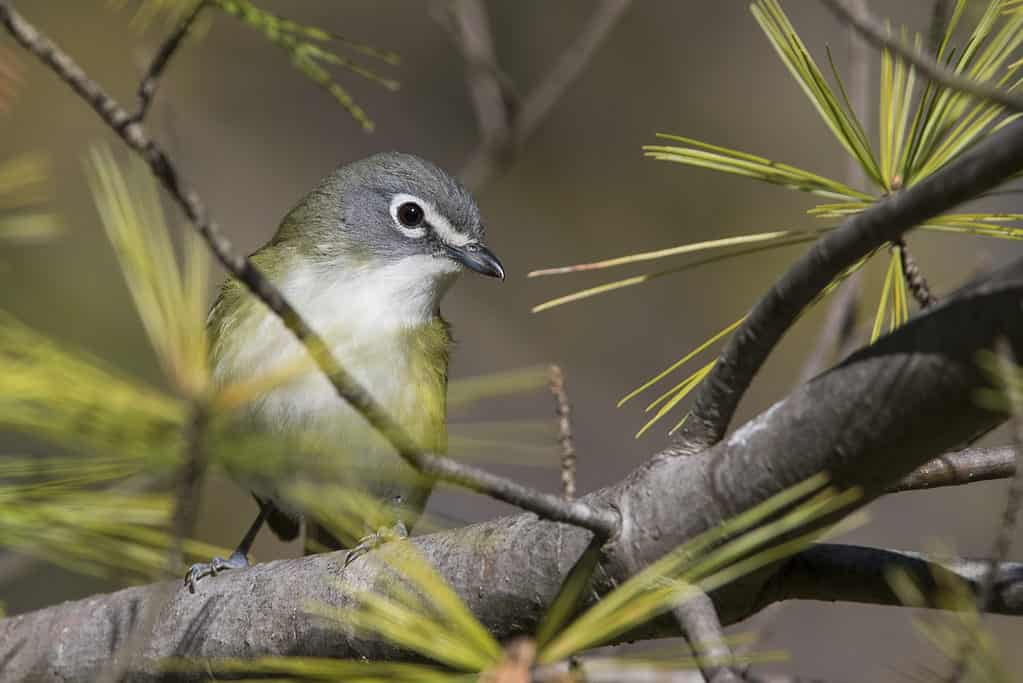
These birds migrate south during the winter, flying to Mexico and Central America until the weather warms up again.
©iStock.com/mirceax
The blue-headed vireo has a blue-gray head with a green body, allowing it to hide within the green leaves and pine needles of the park’s trees. They prefer a mixed forest, and there are only 2 subspecies. Both males and females have this bold coloring, and they are not endangered. The IUCN classifies them as “Least Concern” with no conservation efforts needed.
Harbor Porpoises

The harbor porpoise is one of the smallest marine mammals in the world.
©ErnstS/Shutterstock.com
Only growing to about 5 feet, the harbor porpoise can be found in rivers and bays in Virginia, which is how so many are found near First Landing State Park. In fact, Virginia is home to all three types of marine mammals, including the harbor porpoise, sea lions, and manatees. Much of the confirmation of their presence in Virginia is due to becoming stranded on the shoreline.
Great Horned Owls
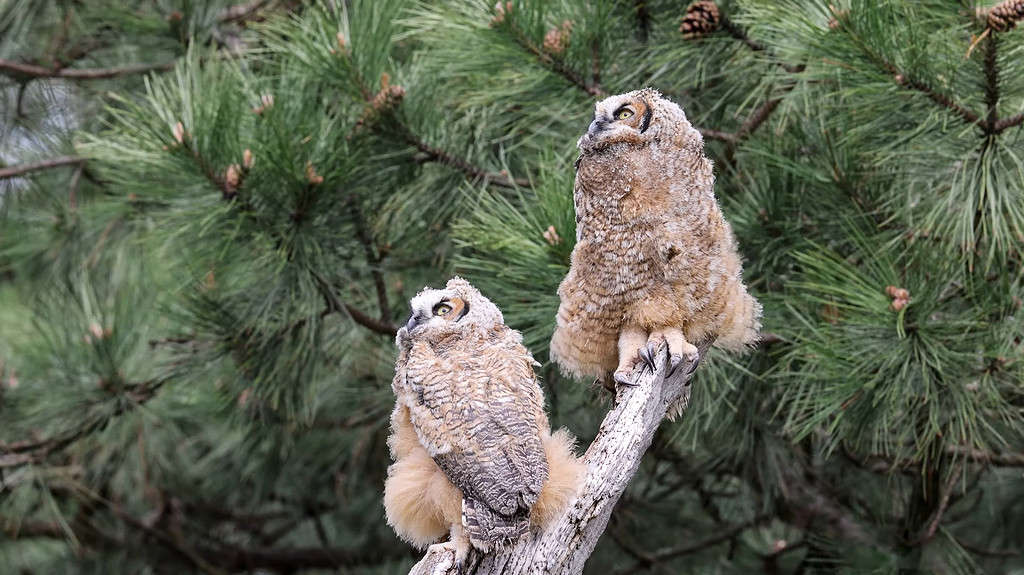
Great horned owls don’t actually have horns – the shape of their “horns” comes from tufts of feathers on the top of their head.
©Banu R/iStock via Getty Images
One of the most aggressive and dangerous predators in the state park’s vicinity is the great horned owl. This majestic bird is so powerful that it goes after prey of all sizes. Whether they find small mice or large mammals, this carnivorous bird prefers to hunt at night. Even though they like to nest in the park’s trees, they are bold creatures, standing on fence posts and flying over busy roads without fear. If you aren’t sure if a great horned owl is near, listen for their signature 4 or 5 hoots, which tells others to stay away.
Great Blue Herons
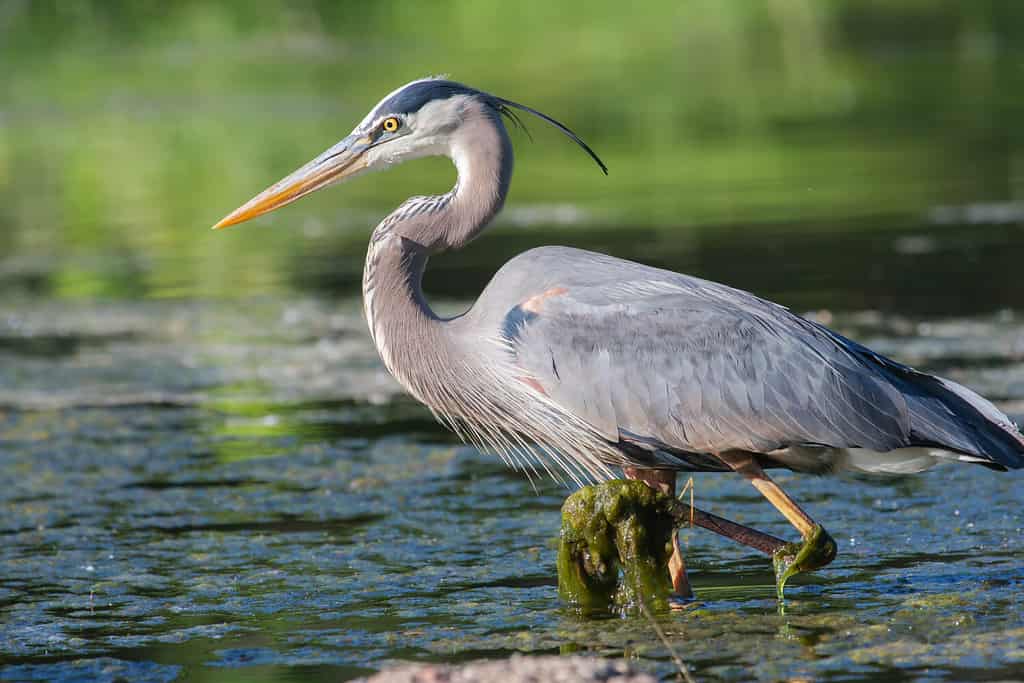
Great blue herons are among the most common birds in Virginia’s marshland.
©Joseph Scott Photography/Shutterstock.com
These herons thrive in water, and the park’s direct access to the Chesapeake Bay gives it the perfect place to wade. During warm weather, the great blue heron eats a fish-based diet. When the cold seasons begin, they prefer small rodents over fish, but they like to forage by themselves. They often nest in groups in the trees when warm weather returns.
Vegetation At First Landing State Park
Much of the park is comprised of forest areas, semi-tropical plants, and lush dunes. Since it has such a variety of habitats, the wildlife is just as varied. Here are a few of the common trees to look for on your next hike at First Landing.
Live Oak Trees
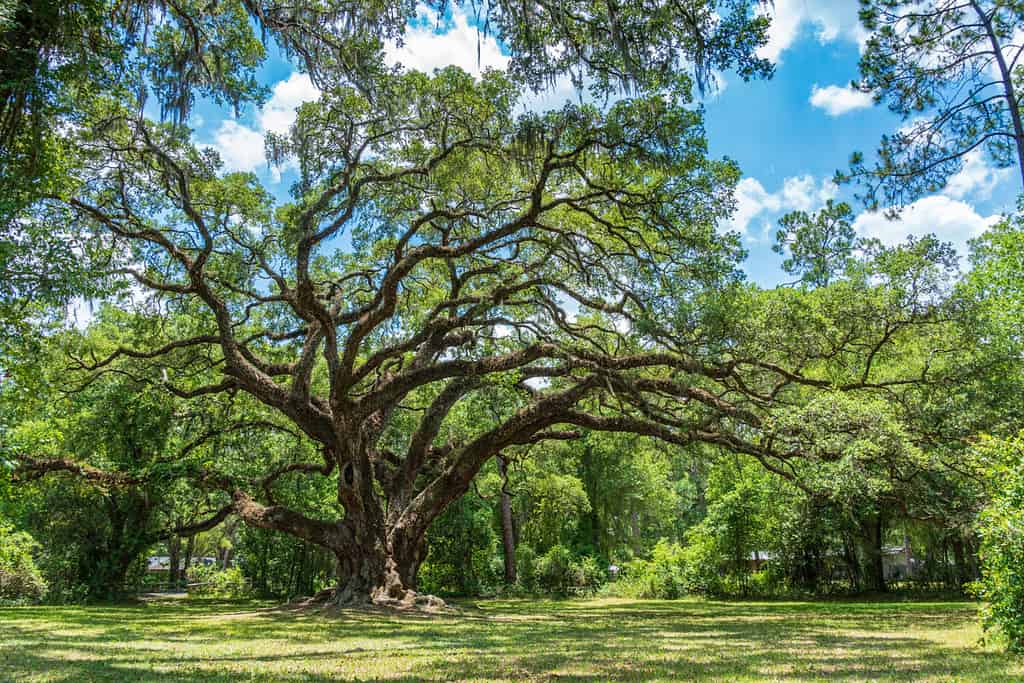
The difference between a live oak and other oaks is that the former keeps its leaves through autumn, rather than shedding them.
©Sunshower Shots/Shutterstock.com
Also known as the southern live oak, this tree only grows in the southeastern region of the United States, making the park the furthest north it could grow. They aren’t evergreen trees, despite retaining their leaves in cold weather. Instead, they release their leaves before spring, so they have fresh growth to sustain. They require a lot of moisture, but soil should be drained to keep them thriving.
Loblolly Pine Trees
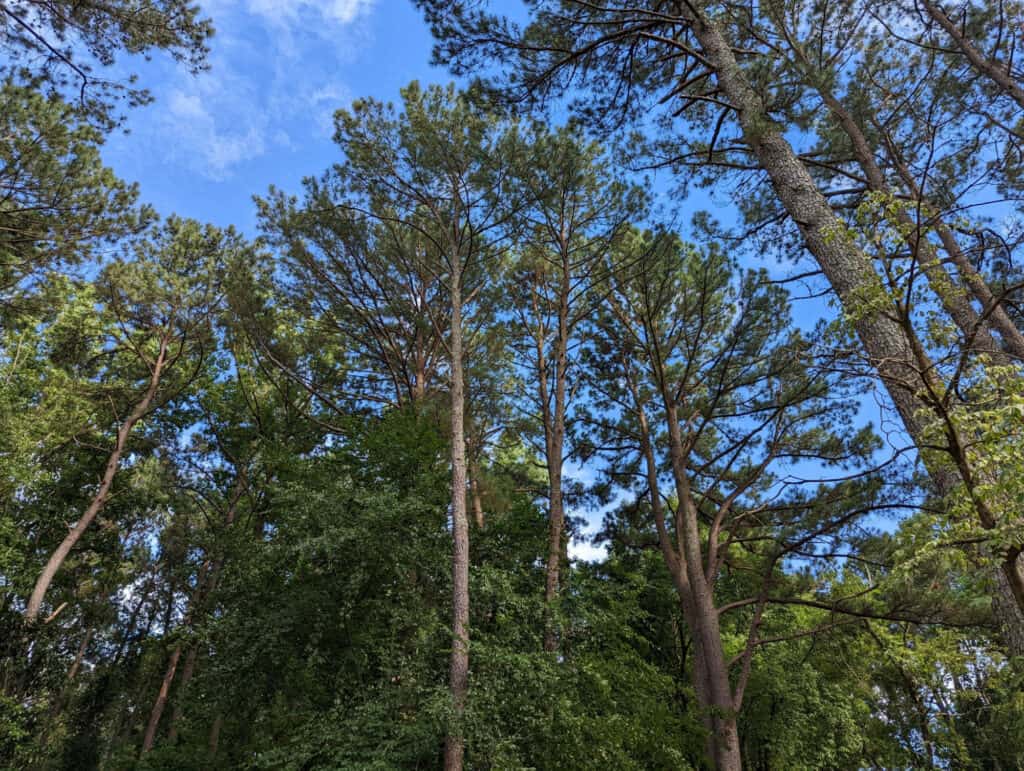
Loblolly pine trees are native to the southeastern United States as well, though they grow as far north as New Jersey.
©Sierra Tango/Shutterstock.com
These trees are one of the most popular trees in First Landing State Park. Their large trunk makes them easy to spot with its reddish-brown bark and light green needles. They grow an average of 2 feet a year, so finding the longest-standing loblolly pine trees is rather easy. With up to a 300-year lifespan, most of the tall loblolly pine trees are older than the park’s visitors.
Wax Myrtle Trees
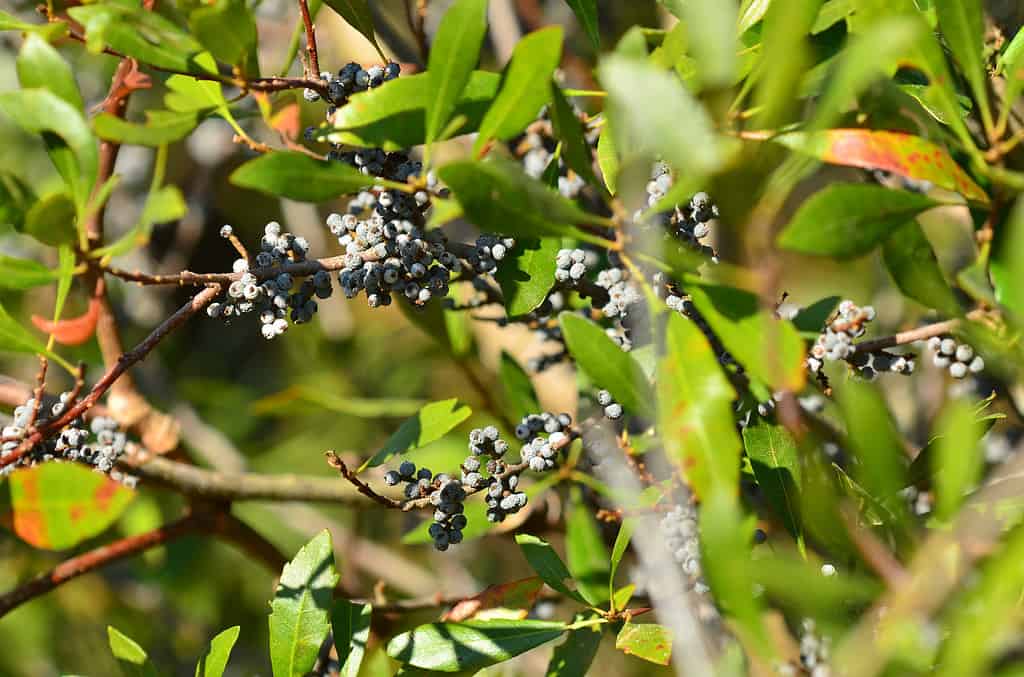
Wax myrtle bushes grow in almost any landscape, flourishing in natural or urban locations easily.
©cturtletrax/iStock via Getty Images
Growing up to 5 feet each year, the wax myrtle bushes are some of the largest in the park. It naturally grows throughout the Americas, and it is easy to plant in residential yards. Some companies use the extract from the tree to make medicine. As they grow, they usually reach 10-15 feet tall, but some surpass 25 feet.
Other Popular State Parks In Virginia
First Landing is just one of many different parks to visit in Virginia. Some of the other popular parks in Virginia Beach include:
- False Cape State Park, a 4,321-acre park with hiking trails and educational camping accommodations.
- Mount Trashmore Park, a 165-acre park that was converted from an abandoned landfill in 1974.
- Little Island, a 130-acre park with access to the beach for swimming, fishing, and crabbing.
The photo featured at the top of this post is © Sherry V Smith/Shutterstock.com
Thank you for reading! Have some feedback for us? Contact the AZ Animals editorial team.







